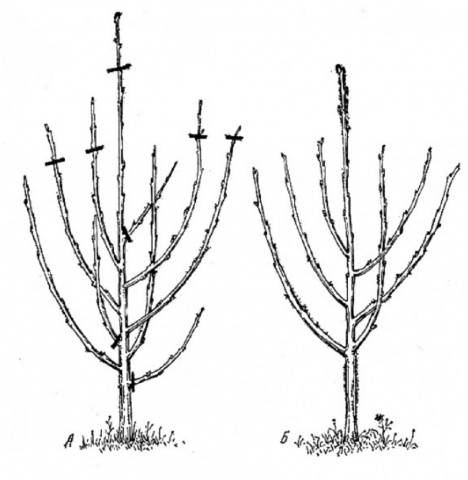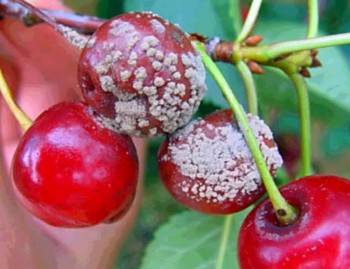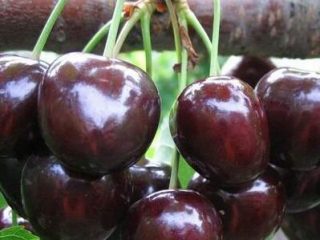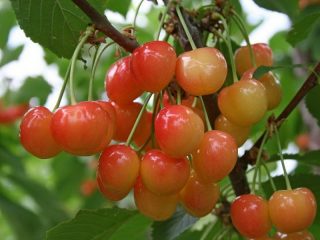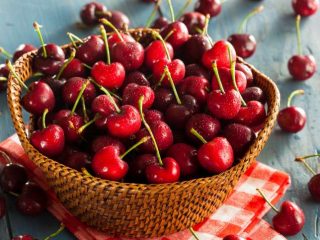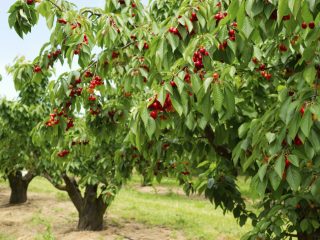Content
Cherry Regina is a late ripening variety. By planting it on his site, the summer resident prolongs the opportunity to feast on a juicy berry until mid-July. We will find out what is necessary for its successful cultivation.
Breeding history
Cherry variety created in Germany on the basis of Rube and Schneider varieties. As a result of the work, the breeders obtained seedlings superior in their qualities to the original plants.
Description of culture
This type of cherry is a tree with a height of about 3 m, with a rounded, not too thickened crown. Shoots grow vertically upward. For a year, they can give an increase of up to 50 cm, the leaves are round. The fruits are large, up to 10 g in weight, bright red and juicy. Ripe berries are quite sweet.
The climatic regions of the Regina cherry growing, where it bears fruit and grows well, stretch from the southern regions of Russia to the Middle Volga region.
Characteristics
Here are the main characteristics of the Regina cherry variety.
Drought resistance, winter hardiness
Sweet cherry is not a drought-resistant crop. To get a good harvest, the tree needs to be watered at least 1 time per month. In dry weather, make sure that the soil does not dry out at the roots.
Regina tolerates winter well enough if it is not grown in the northern regions. Young seedlings need to be spud and tied with burlap or other material from rodents.
Pollination, flowering period and ripening times
The plant is not self-pollinating, moreover, it is not always possible to pick up a late-flowering variety. Pollinators for Regina cherries are varieties of cherries Karina, Salvia, you can use Lotivka, Coral cherries. They are planted close to the pollinated tree. The Regina variety blooms in May, the fruits reach maturity by mid-July.
Productivity, fruiting
The tree is strewn with berries every year. Not all of them can ripen, but up to 40 kg of fruits can be harvested from an adult tree. Begins to bear fruit three years after planting.
The fruits of the Regina sweet cherry remain ripe on the tree for 10-12 days. They do not crack from rain.
Scope of berries
The juicy sweet berry is used fresh. Various blanks are made from it. Besides desserts, wines and liqueurs are good. For winter use, the berry is frozen. Cherry fruits are well transported and quickly disassembled by buyers.
Disease and pest resistance
Specially bred variety is resistant to many diseases of cherry and sweet cherry. In cold and wet weather, a variety of putrefactive formations may appear on the fruits.
Advantages and disadvantages
The advantages of Regina cherries include the following qualities:
- High annual yield.
- Good preservation of berries during storage and transportation.
- Dense berries do not crack or rot from moisture.
- The berries come off easily when picked.
- Good resistance to diseases and harmful insects.
- Ripe fruits fall off within two weeks.
The only drawback is that a pollinator is required to get the ovaries. This is difficult for a late flowering variety.
Landing features
Large-fruited cherry Regina has her own characteristics when landing.
Recommended timing
Seedlings can be planted in spring or fall. Planting in spring gives the plant more chances to harden by fall. It is carried out a few days after the soil has thawed. The seedling is dormant and does not receive stress during transplanting.
Autumn planting is good because there is a large selection of seedlings on the market. You can visually determine their condition. In the fall, planting pits are carefully prepared, they are well fertilized and watered. It is necessary to cover young plantings on the eve of frost.
Choosing the right place
Planting requires a bright spot located in high areas. There should be no drafts, no north winds. Low places where cold fog collects are not suitable for cherries. It is important that the site is not swampy and does not have a close layer of groundwater.
What crops can and cannot be planted next to cherries
Pome trees should not be planted near cherries and cherries. She especially does not tolerate the neighborhood with an apple tree. The pear does not negatively affect the cherries, but the larger root system will take away the nutrients.
For the same reason, large trees are not planted next to it - linden, birch, conifers. From garden crops, cherry does not tolerate nightshade crops, tobacco, eggplant, pepper. Bad neighbors are gooseberries and raspberries.
Cherries, honeysuckle, and plums will be good neighbors.
Selection and preparation of planting material
For planting, choose seedlings obtained by grafting the variety on the stock. The site of inoculation should be visually visible. A cherry seedling should be healthy in appearance, have developed roots without damage. Plant height should not be less than a meter.
Before planting, the seedlings are placed in a root-forming solution. Withstand several hours so that the roots are saturated with water.
Landing algorithm
The cultivation of Regina's sweet cherry begins with its planting. Prepare a pit 60 cm deep and the same width. In its center, a mound is poured from fertile soil mixed with complex fertilizer (no more than 100 g per plant). A peg is driven into the hole, which will serve as a support for a young cherry tree. A seedling is placed on the mound and the roots are straightened.
Next, watering and filling the roots with soil is carried out. The grafting site must remain at the level of the soil. You do not need to fill it with soil. The soil is lightly tamped, excluding the formation of air pockets. Next, the trunk circle is mulched with peat or humus.
The distance between plants is maintained at least 3 meters. If several rows are planted, then an interval of 4-5 meters is made between them.
Follow-up care of the culture
The main care for Regina cherries includes watering, fertilizing, pruning... The tree requires abundant watering at least once a month. A young plant needs 30 liters, and an adult fruiting tree will require 50-60 liters. In dry times, they water it more often, how many times - it is determined depending on the condition of the soil, preventing it from drying out.
A year after planting, the cherry tree will need nitrogen fertilization for the development of the stem mass. Enough 100 g of urea per 1 m2... In the future, complex mineral compositions, compost or rotted manure are introduced. Ash is added, because cherries and cherries do not tolerate acidic soil. You can add dolomite flour around the perimeter in autumn.
Formative pruning of cherries is carried out. She must have one major escape. Competitors are removed. If damaged, the tops of the tree allow another strong shoot to grow.
Every spring, sanitary pruning of the cherry crown is done. Broken, diseased, inward-directed shoots are removed. The cut sites are treated with copper sulfate and covered with garden var.
Young cherry seedlings need winter shelter.Two weeks before frost, mulch from various materials is poured around them. The tree is wrapped in burlap and spruce branches, secured with twine. This will protect them from cold and rodents.
A good example of caring for cherries will be a video tutorial:
Diseases and pests, methods of control and prevention
| Cherry diseases | Characteristic | Control measures |
| Moniliosis | Berries rot, flowers fall off, do not form ovaries. On the fruits, gray growths are noticeable, in which the spores of the fungus ripen. If you don't fight, the whole tree will die | Treatment with Bordeaux liquid in spring and autumn, the use of antibiotics. You also need to cultivate the soil |
| Coccomycosis | Occurs at high air humidity. Brown-red spots are noticeable on the leaves, eventually covering the entire surface of the leaf. Leaves fall off, fruits do not ripen and crumble | Collection and burning of diseased branches. Treatment of a bush with a 3% solution of "Nitrofen" |
| Cherry pests | Characteristic | Control measures |
| Cherry sawfly | Small black insect with yellow stripes. They give birth to caterpillars that eat up leaves and buds. With their strong reproduction, the tree may remain completely naked. | For destruction use: "Actellik", "Karbofos", "Metaphos", "Phosphamide" |
Conclusion
Cherry Regina has become a popular variety among cherry orchard lovers. Large sweet berries deserve to take pride of place among similar horticultural crops. If you plant such a tree on your site, you can get a lot of pleasure in the spring, watching its flowering, and in the summer, eating berries.
Testimonials
I am engaged in the industrial cultivation of cherries. The Regina variety always sells well. Buyers already know this berry. Its popularity is increased by the terms of sale in July, when the cherry is already running out. There are few problems with the care of cherries. The main thing is to feed and water on time if necessary. I made the main shaping once, then only sanitary pruning. My big garden needs a lot of attention, but it's worth it.
I also grow a similar Regina cherry grade Cordia... They have a lot in common. Both are late maturing and require a pollinator. Planted side by side, they can pollinate each other. The large sweet cherries are difficult to tell apart. Unless the shape of Cordia is heart-shaped, while Regina's is round.
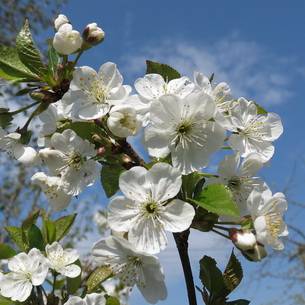
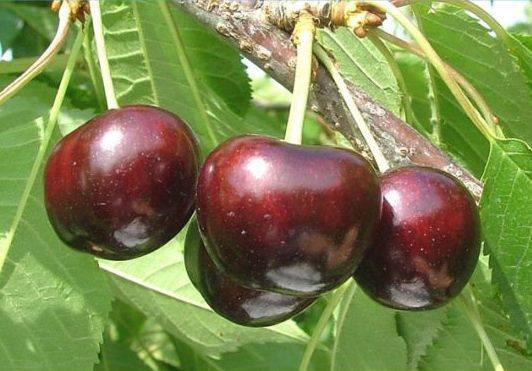
.jpg)

